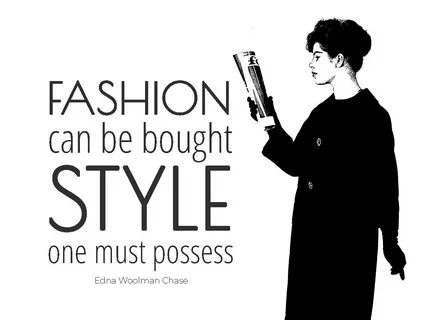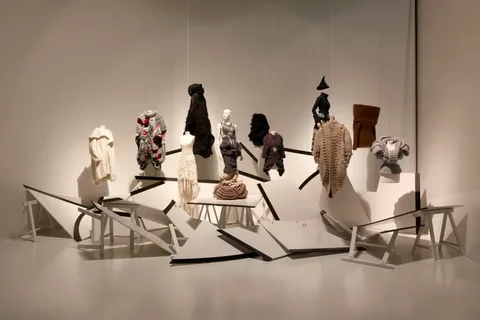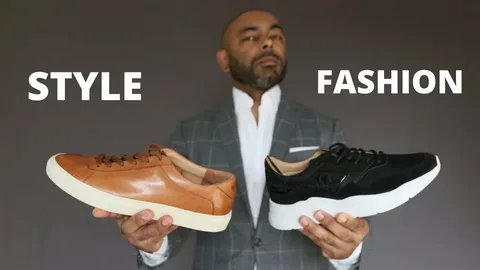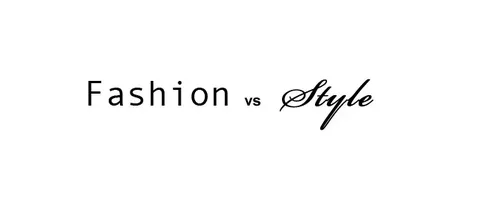Introduction:
In the intricate tapestry of personal expression, the realms of fashion and style emerge as dynamic landscapes, each weaving a distinctive narrative in the fabric of our identities. While the terms are often used interchangeably, a closer examination reveals nuanced differences. This exploration delves into the essence of fashion and style, unraveling the threads that connect trends, individuality, and the timeless artistry of personal expression. Join us on a journey where collective aesthetics meet unique identity, and where the language of fashion and the poetry of style converge.

Table of Contents
Fashion vs. Style: Unraveling the Distinct Threads
In the vibrant tapestry of human expression, two terms often intermingle but carry distinct nuances – fashion and style. Are they mere synonyms, or do they represent unique facets of personal and societal expression? In this exploration, we delve into the intricate threads of fashion and style, unraveling their definitions, examining their temporal and timeless aspects, and understanding their influences on individuality and societal norms.

1. Defining Fashion and Style:
Fashion:
At its core, fashion encapsulates the ever-changing trends, styles, and designs that dominate the cultural landscape at a particular moment. It extends beyond clothing to encompass accessories, hairstyles, and even behavioral patterns. Fashion is a collective expression, dictated fashion and style by designers, influencers, and the dynamic currents of the industry.
Style:
Contrastingly, style is an individual’s personal interpretation of fashion. It is the unique and enduring way someone selects, combines, and presents clothing and accessories. Style is the fingerprint of personal identity, reflecting not just the current trends but a consistent and distinctive approach to self-expression.
In essence, fashion sets the stage, while style steals the spotlight, making the individual a curator of their own aesthetic journey.
2. Temporal vs. Timeless:
Fashion:
Fashion, by its very nature, is transient. It is a reflection of the fashion and style zeitgeist, evolving rapidly as trends emerge, captivate the public imagination, and eventually give way to the next wave of innovation. What’s considered fashionable today may be yesterday’s news tomorrow, marking the ephemerality of fashion trends.
Style:
Conversely, style is more enduring. It’s the steady undercurrent beneath the ever-changing waves of fashion. While influenced by trends, personal style is not beholden to the ticking clock of transient fads. It’s the manifestation of an individual’s aesthetic sensibilities, standing the test of time.
Style, in this context, becomes a visual autobiography, chronicling the evolution of personal tastes and preferences.
3. Expression vs. Conformity:
Fashion:
Fashion often involves conformity – an alignment with what is deemed popular, trendy, or culturally relevant at a specific time. It’s the collective adoption of styles dictated by the fashion industry, celebrities, and influencers. Conforming to fashion trends can be a means of social inclusion and cultural resonance.
Style:
On the contrary, style is a canvas for personal expression. It’s the unique amalgamation of influences, tastes, and preferences that sets an individual apart. While elements of style may draw inspiration from current fashion trends, the arrangement and presentation are deeply personal, making style a mode of self-expression rather than conformity.
In essence, fashion is a language spoken collectively, while style is the unique dialect each individual contributes to the conversation.
4. Influence and External Factors:
Fashion:
The trajectory of fashion is heavily influenced by external factors. Runway shows, celebrity endorsements, and strategic marketing campaigns shape and define the narrative of what is ‘in vogue.’ Fashion is, to a significant extent, a product of external influences that guide and direct the collective consciousness towards certain aesthetic ideals.
Style:
While style may draw inspiration from external influences, it retains a significant degree of autonomy. Personal style allows individuals to filter and interpret these influences through their unique lens. It’s the art of curation, where the individual selects elements that resonate with their personal narrative, irrespective of mainstream fashion dictates.
Here, style becomes a form of artistic autonomy, allowing individuals to navigate the sea of influences and shape their visual identity.

5. Adaptability vs. Individuality:
Fashion:
Adaptability is a hallmark of fashion. It demands a willingness to embrace and embody new trends, even if they deviate from personal preferences. The fashion-forward individual is one who seamlessly integrates the latest styles into their wardrobe, reflecting a dynamic responsiveness to the ever-changing currents of the industry.
Style:
In contrast, style is a celebration of individuality. It’s the manifestation of personal preferences and a commitment to authenticity. While style may incorporate elements of current fashion trends, it does so in a way that aligns with the individual’s unique taste and preferences, emphasizing personal expression over trend conformity.
In essence, fashion is a river that flows, and style is the distinct course each individual charters within that flow.
6. Cultural and Social Dimensions:
Fashion:
Fashion is not a solitary pursuit; it’s a reflection of cultural and societal dimensions. It mirrors the collective consciousness, responding to and influencing societal movements. Cultural symbols, political climates, and social ideals often find expression in the fashion of a particular era, creating a tapestry woven with cultural significance.
Style:
While influenced by external factors, style provides a more nuanced canvas for cultural and social expression. It allows individuals to reinterpret societal influences, infusing personal meaning into their aesthetic choices. Style becomes a dialogue between the individual and their cultural surroundings, a dynamic interplay of personal identity and societal norms.
Here, style becomes a medium through which individuals navigate their cultural landscape, adding layers of personal narrative to the broader societal conversation.
Conclusion:
In the intricate dance of fashion and style, we find a balance between collective expression and individual identity. Fashion, with its ever-shifting trends, sets the stage for a dynamic cultural conversation. Style, on the other hand, emerges as a personal soliloquy, a unique expression that transcends temporal boundaries.
As we navigate the realms of fashion and style, let us celebrate the collective tapestry woven by trends while honoring the individual strokes that create the masterpiece of personal style. For in this interplay, we discover the beauty of a world where conformity and autonomy coexist, and the canvas of self-expression is as vast and diverse as the human experience itself.

FAQs
1: What is the fundamental difference between fashion and style? A1: Fashion refers to the prevailing trends and designs at a particular time, often set by the industry. Style, on the other hand, is a more personal and enduring expression of how an individual presents themselves, reflecting unique tastes and preferences.
Q2: Are fashion and style interconnected, or are they entirely separate concepts? A2: While fashion and style are related, they represent distinct concepts. Fashion sets broader trends and influences, while style is an individual’s unique interpretation and presentation of those trends.
Q3: How does fashion evolve over time, and does style change similarly? A3: Fashion evolves rapidly, with trends coming and going. Style, however, is more timeless, representing a consistent and distinctive expression that endures over the years, adapting with the individual’s growth.
Q4: Is personal style influenced by current fashion trends? A4: Personal style may draw inspiration from current fashion trends, but it is not bound by them. Individuals often integrate elements of fashion into their style, tailoring trends to suit their unique aesthetic preferences.
Q5: Can one be fashionable without having a defined personal style? A5: Yes, one can be considered fashionable by adhering to current trends. However, personal style adds a unique layer to fashion, turning trends into a more individualistic and authentic expression.
Q6: How do external factors influence fashion, and to what extent does style resist external influences? A6: External factors such as runway shows, celebrity endorsements, and marketing significantly influence fashion. Style, while influenced, maintains a level of autonomy, allowing individuals to interpret and filter external influences through their unique lens.
Q7: Is it necessary to adapt to new fashion trends to be considered stylish? A7: No, personal style is not contingent on adopting every new trend. Stylish individuals often incorporate elements they resonate with, creating a distinctive look that aligns with their preferences.
Q8: Can cultural and societal dimensions be observed in both fashion and personal style? A8: Absolutely. Fashion often mirrors cultural and societal movements, while personal style provides a nuanced canvas for individuals to reinterpret and express these influences in a more personalized manner.
Q9: How does fashion and style contribute to individual identity? A9: Fashion and style both play crucial roles in shaping individual identity. Fashion reflects collective identity, and personal style adds an extra layer, allowing individuals to communicate their uniqueness and authenticity.
Q10: Can style exist without any influence from current fashion trends? A10: Yes, style can exist independently of current fashion trends. While it may draw inspiration, personal style is a distinctive expression that transcends the transient nature of fashion trends.
 Nextezone: Igniting Tomorrow's Potential with Innovation Today Innovate. Explore. Elevate. Nextezone – Where Vision Meets Innovation.
Nextezone: Igniting Tomorrow's Potential with Innovation Today Innovate. Explore. Elevate. Nextezone – Where Vision Meets Innovation.
